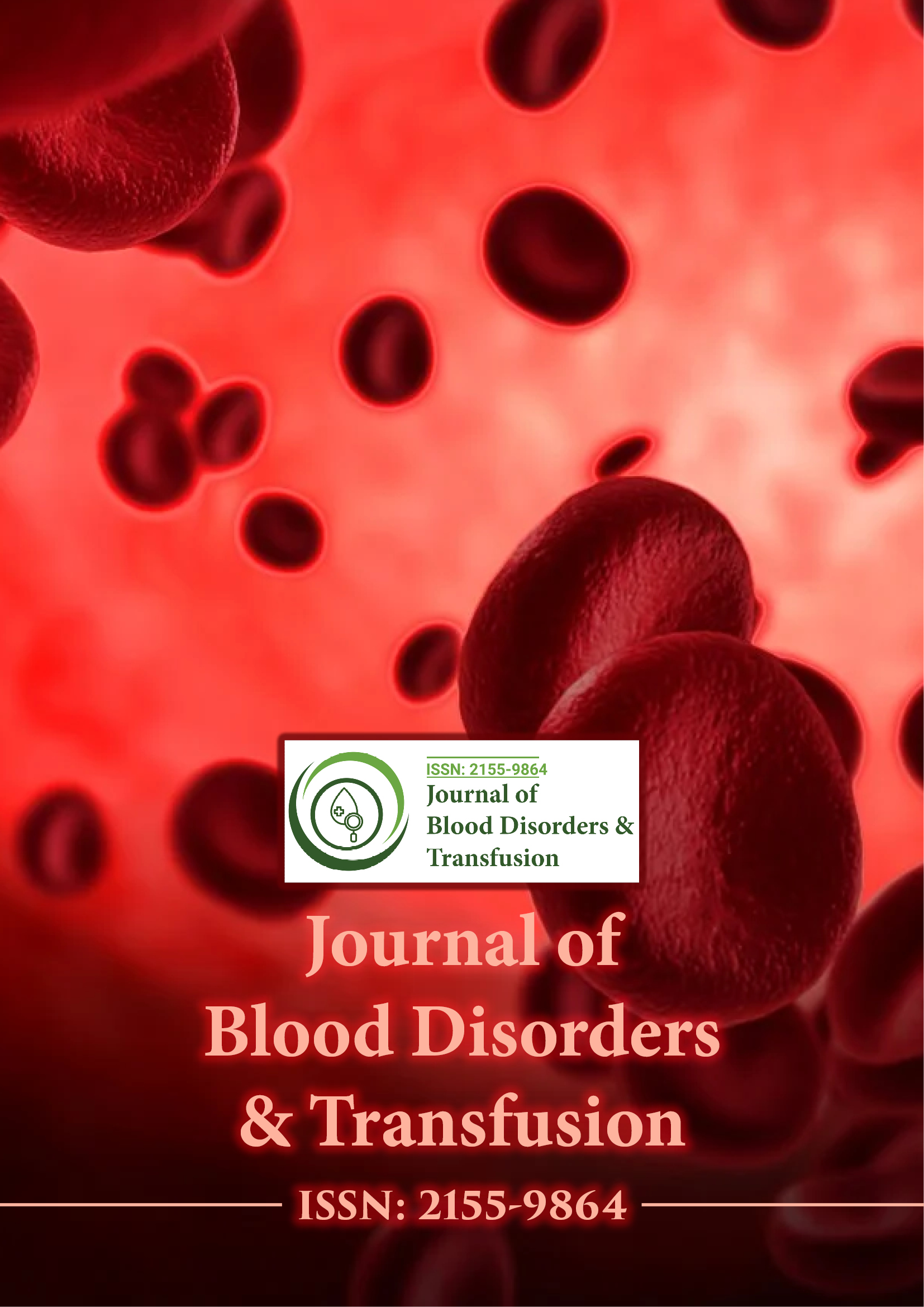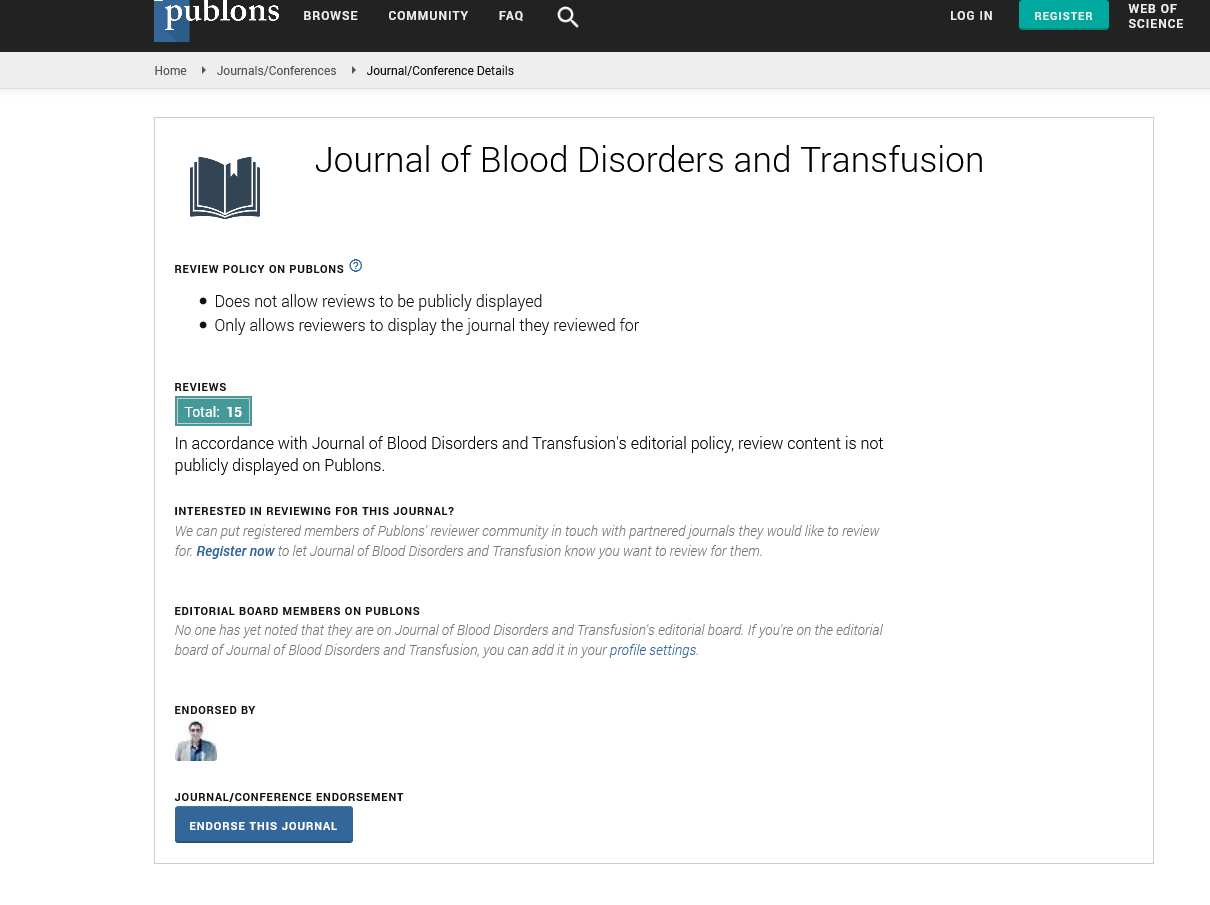Indexed In
- Open J Gate
- Genamics JournalSeek
- JournalTOCs
- Ulrich's Periodicals Directory
- RefSeek
- Hamdard University
- EBSCO A-Z
- OCLC- WorldCat
- Proquest Summons
- Publons
- Geneva Foundation for Medical Education and Research
- Euro Pub
- Google Scholar
Useful Links
Share This Page
Journal Flyer

Open Access Journals
- Agri and Aquaculture
- Biochemistry
- Bioinformatics & Systems Biology
- Business & Management
- Chemistry
- Clinical Sciences
- Engineering
- Food & Nutrition
- General Science
- Genetics & Molecular Biology
- Immunology & Microbiology
- Medical Sciences
- Neuroscience & Psychology
- Nursing & Health Care
- Pharmaceutical Sciences
Perspective - (2024) Volume 15, Issue 5
Monoclonal Gammopathies: The Progression of Plasma Cell Disorders from Benign to Malignant
Monoc Leena*Received: 28-Aug-2024, Manuscript No. JBDT-24-26918; Editor assigned: 30-Aug-2024, Pre QC No. JBDT-24-26918 (PQ); Reviewed: 13-Sep-2024, QC No. JBDT-24-26918; Revised: 20-Sep-2024, Manuscript No. JBDT-24-26918 (R); Published: 27-Sep-2024, DOI: 10.4172/2155-9864.24.15.595
Description
Monoclonal gammopathies encompass a spectrum of conditions characterized by the proliferation of a single clone of plasma cells, leading to the production of Monoclonal Proteins (M Proteins). These disorders range from benign conditions, such as Monoclonal Gammopathy of Undetermined Significance (MGUS), to malignant diseases like multiple myeloma. Understanding this progression is significant for early detection, appropriate monitoring and effective management of patients.
Monoclonal Gammopathy of Undetermined Significance (MGUS)
In MGUS, a small number of plasma cells produce M proteins, but the levels are not high enough to cause symptoms or organ damage. The risk of progression to multiple myeloma or other lymphoproliferative disorders is approximately 1% per year.
Smoldering Multiple Myeloma (SMM)
Smoldering Multiple Myeloma (SMM) is an intermediate stage between MGUS and active multiple myeloma. Patients with SMM have higher levels of M proteins and a greater proportion of plasma cells in the bone marrow compared to those with MGUS, but they do not yet exhibit the symptoms or organ damage seen in multiple myeloma. The risk of progression from SMM to multiple myeloma is higher than that from MGUS, with approximately 10% of patients progressing per year for the first five years following diagnosis.
Monitoring patients with SMM involves regular blood tests and imaging studies to detect early signs of progression. Recent research has focused on identifying high-risk SMM patients who may benefit from early intervention to delay or prevent the onset of symptomatic myeloma.
Multiple myeloma
Multiple myeloma is a malignant plasma cell disorder characterized by uncontrolled proliferation of plasma cells in the bone marrow, leading to the production of large amounts of M proteins. This overproduction can result in a range of symptoms and complications, including bone pain and fractures, anemia, kidney dysfunction, hypercalcemia and increased susceptibility to infections.
The diagnosis of multiple myeloma is based on the presence of M proteins in the blood or urine, more than 10% plasma cells in the bone marrow and evidence of organ damage or related symptoms. Treatment strategies for multiple myeloma have evolved significantly over the past few decades and now include a combination of chemotherapy, immunotherapy, targeted therapy and stem cell transplantation. Despite these advancements, multiple myeloma remains an incurable disease, with most patients eventually experiencing relapse.
Other plasma cell disorders
In addition to MGUS, SMM and multiple myeloma, the spectrum of monoclonal gammopathies includes other disorders such as Waldenström macroglobulinemia and primary amyloidosis. Waldenström macroglobulinemia is characterized by the production of IgM M proteins and infiltration of the bone marrow by lymphoplasmacytic cells, leading to symptoms like hyperviscosity syndrome and neuropathy. Primary amyloidosis involves the deposition of amyloid fibrils derived from light chains produced by clonal plasma cells, resulting in organ dysfunction.
Conclusion
Monoclonal gammopathies represent a progression of plasma cell disorders, ranging from the benign MGUS to the malignant multiple myeloma. Understanding this spectrum is essential for the early identification and management of patients at risk of progression. Ongoing research into the underlying mechanisms and risk factors for progression is critical for developing targeted therapies and improving patient outcomes. Regular monitoring and appropriate interventions can help manage these conditions effectively, enhancing the quality of life for affected individuals.
Citation: Leena M (2024). Monoclonal Gammopathies: The Progression of Plasma Cell Disorders from Benign to Malignant. J Blood Disord Transfus. 15:595.
Copyright: © 2024 Leena M. This is an open-access article distributed under the terms of the Creative Commons Attribution License, which permits unrestricted use, distribution, and reproduction in any medium, provided the original author and source are credited.

